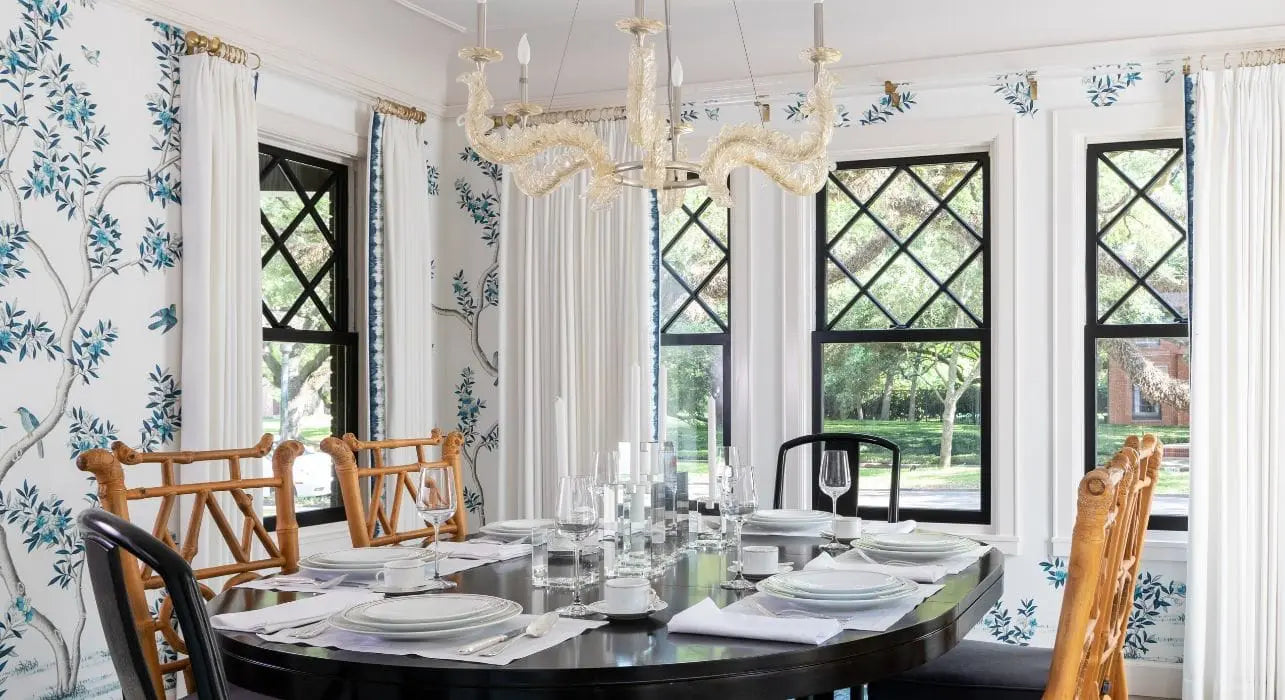Chinoiserie, Interesting Things About This Popular Interior Decoration Style


Chinoiserie is a style that dates back to the 17th century. It’s almost impossible to flip through an interior design magazine without seeing chinoiserie elements. The iconic blue and white ginger jar may be the most recognizable chinoiserie item, but there’s so much more to this global design style than meets the eye. Today, I’m sharing a chinoiserie guide that will help you explore the history and motifs of one of my favorite Asian-influenced design styles.
THE OLD HISTORY OF CHINOISERIE
The word chinoiserie comes from the French word chinois, meaning “after the Asian taste.” Chinoiserie did not originate directly from Asia. It was the European understanding of Asian design. As trade with Asia flourished in the 17th and 18th centuries, the chinoiserie style became popular.
Few Europeans visited Asia. Their limited knowledge of the region led to some misunderstandings, but they developed a great respect for Asian art and culture. They were fascinated by these “exotic” cultures and began to create their own versions of Asian designs. The refined rococo style with its ornate details made a wonderful combination with the imaginative designs of chinoiserie. It was not long before chinoiserie began to appear in the courts of King Louis XV and King George IV. an

A chinoiserie-themed pillow in an apartment at The River Oaks.
In the following years, as tea exports from East Asia increased, Europeans quickly adopted the culture and tradition of tea drinking. As an important part of society, noblewomen desired to create a chinoiserie space suitable for their tea drinking rituals. This increased the European demand for chinoiserie works.
GUIDE TO CHINOISERIE: KEY ELEMENTS OF THE STYLE
DRAGON

The dragon plays an important role in Chinese mythology and some other Asian countries including Vietnam. It is a mythical creature that symbolizes power and good luck. Dragons are often depicted on ceramics, silk curtains and other decorative objects.
Dragons appearing on chinoiserie works not only have mystical meanings but also symbolize nobility and authority. They make the space more lively and stylish, and are cultural and artistic highlights in the design.
Oriental Painting
An indispensable part of chinoiserie is Dong Hoa paintings - hand-painted or printed paintings on paper. These paintings are not only highly artistic but also tell stories about the life and culture of Asian people.
Chinoiserie often uses contrasting patterns and colors, creating a harmony between the light background and the pattern. This creates a unique and appealing visual feel.
CERAMIC DECORATIONS

It is impossible to talk about chinoiserie without mentioning lanterns, dishes, planters and other ceramic decorations. These works are often meticulously embroidered with delicate patterns, creating a sense of luxury and class.
Chinoiserie is not just a design style, but also a process of understanding the culture, art and history of Asia. By creating a living space that is rich in chinoiserie, you are telling a story about a distant, unique world, providing a cherished connection between two different lands.
THE TIGER TALES
Tigers are a popular motif in chinoiserie. Believed to ward off negative energy, they were often placed outside temples and palaces.
NATURAL SCENERY

Bold, romantic landscape paintings with pagodas, birds and large floral motifs were popular in the chinoiserie style. Europeans preferred this design for wallpaper and drapery, which was often handmade and quite expensive.
These patterns create a living space that is stylish, interesting and colorful. You can imagine yourself walking in a magical garden, with the song of birds and the scent of fruits filling your senses. These patterns not only create a beautiful interior space, but also tell the story of the richness of East Asian nature and culture.
PAGODA
The multi-story pagoda, also known as a pagoda, originated in India and spread to Asia with the spread of Buddhism. These multi-story towers are considered sacred places of worship and are an important part of East Asian architecture.
Pagodas are not only architectural structures of outstanding form, but also carry deep spiritual and cultural significance. They often appear in rural and urban landscapes, creating a beautiful scene of peace and dignity. Each floor of the pagoda often represents a level of spiritual progress, and climbing from one floor to the next can be understood as a journey of seeking enlightenment and self-fulfillment.
With its charming beauty and profound spiritual significance, the pagoda is an indispensable element in the chinoiserie style. Images of pagodas often appear on chinoiserie artworks and decorations, creating a unique combination of Oriental art and European decorative style.


GUIDE TO CHINOISERIE: FURNITURE AND MATERIALS
MATERIAL
Faux bamboo and lacquerware are two of the most popular chinoiserie materials. The art of creating traditional Asian lacquerware is a slow, painstaking process. The craftsman coats the piece of furniture with layers of resin. This resin hardens into a hard, penetrating resin, giving the furniture its characteristic luster. Often the craftsman will hand-paint the designs, inlay details, or create intricate carvings to complete the piece.
FURNITURE
Chinoiserie can appear on everything from wallpaper to chairs and decorative objects to blue-patterned bedding . Many pieces of furniture include flowing lines resembling pagoda floors and carved designs known as fretwork. Thomas Chippendale, a famous 18th-century chinoiserie furniture designer, took inspiration from Chinese fretwork to create his famous latticework chair.
Chinoiserie furniture pieces are not only artistic but also tell the story of the fusion of two different cultures. They create a unique combination of Asian tradition and European design style, bringing sophistication and charm to your living space.
Chinoiserie is more than just a style of decoration, it is a way to connect with a faraway world. Elements like tigers and natural scenes bring magic and mystery to your space, while showing respect and passion for the art and culture of Asia.
See all 30 typical interior styles here
This article was compiled and translated by La Vie En Rose.
Please cite the source for all sharing.
